Related Research Articles
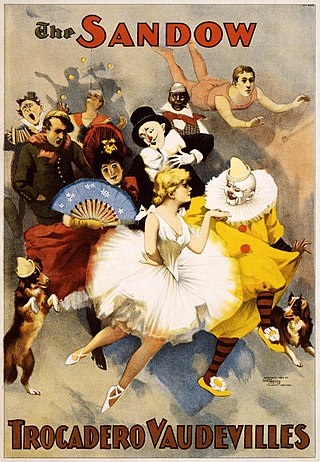
Vaudeville is a theatrical genre of variety entertainment which began in France at the end of the 19th century. A vaudeville was originally a comedy without psychological or moral intentions, based on a comical situation: a dramatic composition or light poetry, interspersed with songs or ballets. It became popular in the United States and Canada from the early 1880s until the early 1930s, while changing over time.
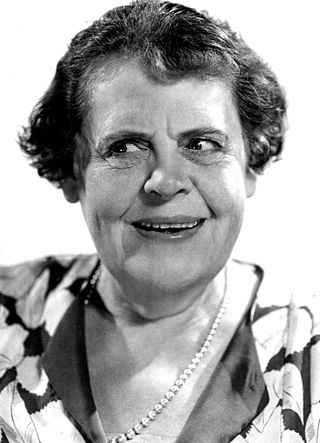
Marie Dressler was a Canadian stage and screen actress, comedian, and early silent film and Depression-era film star.

Chautauqua is an adult education and social movement in the United States that peaked in popularity in the late 19th and early 20th centuries. Chautauqua assemblies expanded and spread throughout rural America until the mid-1920s. The Chautauqua brought entertainment and culture for the whole community, with speakers, teachers, musicians, showmen, preachers, and specialists of the day. U.S. President Theodore Roosevelt is often quoted as saying that Chautauqua is "the most American thing in America". What he actually said was: "it is a source of positive strength and refreshment of mind and body to come to meet a typical American gathering like this—a gathering that is typically American in that it is typical of America at its best." Several Chautauqua assemblies continue to gather to this day, including the original Chautauqua Institution in Chautauqua, New York.

Sophie Tucker was an American singer, comedian, actress, and radio personality. Known for her powerful delivery of comical and risqué songs, she was one of the most popular entertainers in the U.S. during the first half of the 20th century. She was known by the nickname "the Last of the Red-Hot Mamas".

Ida M. Cox was an American singer and vaudeville performer, best known for her blues performances and recordings. She was billed as "The Uncrowned Queen of the Blues".

Lillian Russell was an American actress and singer. She became one of the most famous actresses and singers of the late 19th and early 20th centuries, praised for her beauty and style, as well as for her voice and stage presence; a reviewer referred to her as "the most beautiful actress of the legitimate stage."
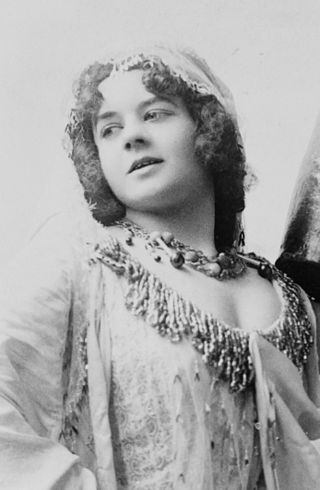
Eva Tanguay was a Canadian singer and entertainer who billed herself as "the girl who made vaudeville famous". She was known as "The Queen of Vaudeville" during the height of her popularity from the early 1900s until the early 1920s. Tanguay also appeared in films, and was the first performer to achieve national mass-media celebrity, with publicists and newspapers covering her tours from coast-to-coast, out-earning the likes of contemporaries Enrico Caruso and Harry Houdini at one time, and being described by Edward Bernays, "the father of public relations", as "our first symbol of emergence from the Victorian age."

Matilda Sissieretta Joyner Jones was an American soprano. She sometimes was called "The Black Patti" in reference to Italian opera singer Adelina Patti. Jones' repertoire included grand opera, light opera, and popular music. Trained at the Providence Academy of Music and the New England Conservatory of Music, Jones made her New York City debut in 1888 at Steinway Hall, and four years later she performed at the White House for President Benjamin Harrison. She sang for four consecutive presidents and the British royal family, and was met with international success. Besides the United States and the West Indies, Jones toured in South America, Australia, India, southern Africa, and Europe.
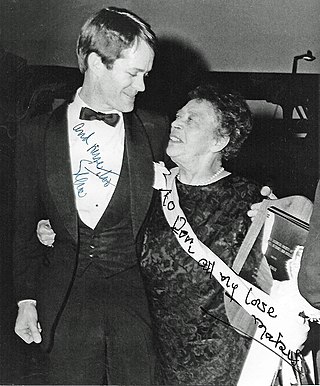
Mabel Mercer was an English-born cabaret singer who performed in the United States, Britain, and Europe with the greats in jazz and cabaret. She was a featured performer at Chez Bricktop in Paris, owned by the hostess Bricktop, and performed in such clubs as Le Ruban Bleu, Tony's, the RSVP, the Carlyle, the St. Regis Hotel, and eventually her own room, the Byline Club. Among those who frequently attended Mercer's shows was Frank Sinatra, who made no secret of his emulating her phrasing and story-telling techniques.

Daphne Pollard was an Australian-born vaudeville performer and dancer, active on stage and later in US films, mostly short comedies.

Trixie Friganza was an American actress. She began her career as an operetta soubrette, working her way from the chorus to starring in musical comedies to having her own feature act on the vaudeville circuit.

Anita Bush was an African American stage actress and playwright. She founded the Anita Bush All-Colored Dramatic Stock Company in 1915, a pioneering black repertory theatre company that helped gain her the moniker "The Little Mother of Colored Drama".
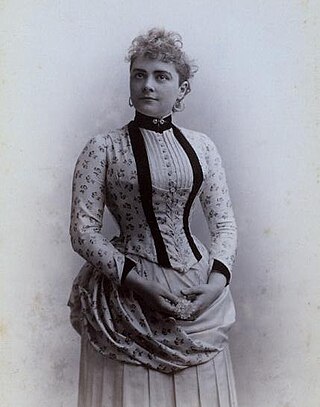
Pauline Hall was an American stage actress and singer.
Tent shows have been an important part of American history since the mid-to-late nineteenth century. In 1927, Don Carle Gillette gave "statistical evidence that the tented drama constituted 'a more extensive business than Broadway and all the rest of the legitimate theatre industry put together.'" The shows first began "in regions which couldn’t support full-time playhouses." Men such as Fayette Lodowick, one of the earliest tent show entrepreneurs, would travel around river towns all over the United States making money on traveling tent shows. These shows "were utilized for a variety of amusements including medicine shows, moving picture shows, vaudeville shows, circuses, musicals, concert companies, and any number of one-night stand dramatic troupes."
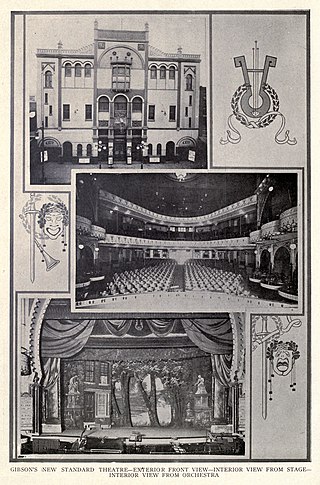
The Standard Theatre showcased Philadelphia's most talented African-American performers and jazz musicians in the early twentieth century. During its peak years (1915–1930), the Standard was one of Philadelphia's most famous and successful black theaters. Its exceptional success can be attributed to its owner, John T. Gibson, an African-American man who envisioned affordable entertainment for people of color.

The Whitman Sisters were four African-American sisters who were stars of Black Vaudeville. They ran their own performing touring company for over forty years from 1900 to 1943, becoming the longest-running and best-paid act on the T.O.B.A. circuit. They comprised Mabel (May) (b. Ohio; 1880–1942), Essie (Essie Barbara Whitman; b. Osceola, Arkansas, July 4, 1882 – May 7, 1963), Alberta "Bert" (b. Kansas; 1887–1964) and Alice (b. Georgia; 1900–December 29, 1968).
Louise Linden was a nineteenth-century American saxophone virtuoso. From 1877–1881, when female woodwind and brass players were rare, Linden performed throughout the eastern United States as a soloist in regional theatrical circuits, female minstrelsy, and vaudeville.

Nora Bayes was an American singer and vaudeville performer who was popular internationally between the 1900s and 1920s. She is credited with co-writing the song "Shine On, Harvest Moon" and performed many successful songs during the First World War, including "Over There." She was also noted for her independent views and unconventional private life, becoming an early media celebrity. She made over 160 recordings.
Nancy McCord was an American soprano and actress who had an active career in opera, musical theatre, and vaudeville during the 1920s, 1930s and early 1940s. She appeared in operettas and musicals on Broadway and in operas with several American companies, including the St. Louis Municipal Opera and the Metropolitan Opera. Her repertoire consisted mainly of roles from light opera and operettas. She is best remembered for creating the roles of Marie-Baroness von Schlewitz in the original production of Oscar Hammerstein II and Sigmund Romberg's May Wine (1935); and Mary Stone in the world premiere of Douglas Moore's The Devil and Daniel Webster (1939). She also performed leading roles in the United States premieres of two operettas: Franz Lehár's The Land of Smiles and Robert Stolz's Venus in Seide.
June Winters was an American actress and singer who was actively performing from the mid-1930s into the 1960s. She first came to prominence starring in the Broadway musical Hellzapoppin at the Winter Garden Theatre from 1938 through 1941. A versatile performer, her career spanned a wide array of genres from vaudeville to musicals to opera and popular music. Married to trumpeter and songwriter Hugo Peretti, she achieved her greatest success creating content for children as the "Lady in Blue" in partnership with her husband; releasing dozens of albums with sung and spoken material from 1947 into the early 1960s. The character Lady in Blue also had her own comic strip and Saturday morning radio program on NBC Radio. The couple also co-founded the Mayfair Records company.
References
- 1 2 3 4 "A Star of the Stage: Mabel Berra, the Venus of Vaudeville, is Buried Near Hayesville." Ashland Times-Gazette, April 6, 2011.
- ↑ "Mabel Berra". idnc.library.illinois.edu. New York Clipper. November 8, 1916. Retrieved 13 October 2014.
- ↑ "Mabel Berra Is Shea's Headliner". The Toronto World. September 15, 1914. Retrieved 13 October 2014.